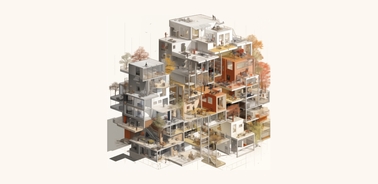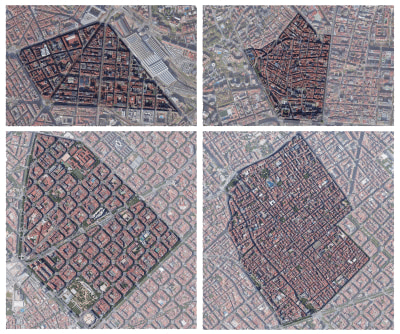Urban form and housing diversity

IE School of Architecture and Design professor Cem Sinan Kayatekin and alumnus Lorenzo Uribe investigate how city block, plot, and street structures impact housing diversity.
There is a commonly-spoken, but not quite so commonly-verified, supposition in urban planning circles regarding the dichotomy of "bottom-up" versus "top-down" urban districts. The belief is that urban forms generated through bottom-up approaches foster greater diversity in terms of people and incomes, and weave them together into a cohesive urban fabric. In contrast, top-down approaches are thought to exhibit more uniform, monocultural characteristics. This perspective likely draws from ecological parallels, since we do often observe high diversities in autochthonous habitats emerging organically from bottom-up processes, while top-down interventions often result in more monocultural dynamics, akin to intensive agricultural habitats.
In late 2021, my former student and current colleague, Lorenzo Uribe, and I embarked on an exploration of this overarching topic from the perspective of housing. We sought to assess whether the physicality of the built world at the larger scales, trickled down to impact the housing stock at the smaller scales. The research specifically delved into four districts across Barcelona and Madrid, investigating whether the structure of city blocks, plots, streets, and other elements impacted the diversity of housing options, both in terms of cost and size, at the micro end of the spectrum.

We presented the findings of this research at the 8th International Conference of Urban Planning and Architecture Design for Sustainable Development (UPADSD) which took place between October 24-26 at the University of Florence, Italy.
A few points to note.
First, the research revealed that the granularity of urban form does not necessarily carry over into diversity. While the bottom-up districts supported a finer-grain of block sizes, plot sizes, and street widths, this finer granularity didn’t consistently equate to higher diversity of urban form elements. Using the Simpson Diversity Index as a metric for quantifying diversity, we found that the top-down sometimes actually outperformed the bottom-up in terms of the diversity of urban form parameters. The same pattern was observed in the housing stock—with the bottom-up having a finer grain, but not necessarily higher diversity, of unit sizes.
Second, the bottom-up did support more affordable housing conditions, although not universally. Slightly-lower rents only at the smaller-scale of housing units were observed—particularly in the 1–2 bedroom range below 80 sq.m. This is incidentally a critical scale for households looking to establish a foothold within the city, as it is a size of unit that can accommodate both emerging-professional households and growing families supporting 1-2 dependents.
Third, this finer-grain housing stock was disproportionately supported by smaller-scale plots. In both top-down and bottom-up districts, this smaller-scale housing stock was consistently located within smaller-sized plots, specifically those measuring less than or equal to 295 sq.m..
Fourth, the outperformance of the bottom-up over the top-down regarding small-scale housing (point two above), was not tied to a functional difference between the two types of districts. The bottom-up simply had a greater number of smaller-scale plots, which by nature supported a larger quantity of smaller-scale units.
Additional research is necessary to further test these findings, but this final point presents a potentially meaningful connection to urban development projects, both new and adaptive reuse, seeking to support housing stock diversity. While we often look at urban form in terms of block and building typologies, this research hints at the overlooked significance of plot scale, suggesting that it plays a critical role in housing granularity.